Myanmar water festival Thingyan is official bank holiday and celebrated between 13-17 April 2018.
Understanding Thingyan
Water festival is the most significant annual festival on the Myanmar calendar; it marks the start of the New Year, the beginning of the Myanmar lunar calendar and celebrates life and rebirth. The correct Myanmar name for water festival is Thingyan, however outside Myanmar it is often referred to as the water festival.
History
The story behind Thingyan originated from the Buddhist version of a Hindu myth. The story goes that the King of Brahmas called Arsi, lost a wager to the King of Devas, Sakra (or Thagya Min as he is known in Myanmar). On losing the wager Arsi was decapitated and the head of an elephant was put onto his body (transforming him into Ganesha). The Brahma was so powerful that if the head were thrown into the sea it would dry up immediately. If I were thrown up into the air the sky would burst into frames. Sakra therefore commanded that the Brahma’s head be carried by one princess devi after another taking turns for a year each. The New Year henceforth marked the changing of hands of Brahma’s head and is celebrated by Thingyan festival.
The Days of Thingyan
First Day – Thinyan Eve – called a-kyo nei: in Myanmar: The start of a variety of religious activities.
Second Day – a-kya nei: Thagya Min makes his descent from the heavens to earth. The water throwing starts.
Third Day – a-kyat nei: which may run on an extra day in certain years.
Fourth Day – a-tet nei: The last day when Thagya Min returns to the heavens. The water throwing stops.
Fifth Day – New year’s Day – hnit hsan ta yet nei: The start of the Burmese month of Tagu. Many people make New Year resolutions.

Religious Activities
Starting from Thingyan Eve Buddhists are expected to observe the Eight Precepts including having only one meal before noon and hold upo satha observance days, which are similar to the Christian Sabbath. Alms are given to monks and offerings to Buddha images. An offering is typically a green coconut with its stalk intact encircled by bunches of green bananas 9nga pyaw pwe oun pwe) and sprigs of thabyay or jambul (Syzygium cumini). Once the offering is given, scented water is poured over the Buddha image in a ceremonial washing from the head down.
On a-kya nei Thagya Min makes his descent from the heavens to earth. At a givem signal, a cannon (Thingyan a-hmyauk) is fired and people come out with pots of water and sprigs of thabyay, then pour the water onto the ground with a prayer. A prophesy for the new year (Thingyan sa) will have been announced by the brahmins (ponna) and this is based on what the animal Thagya Min will be riding and what he might be carrying. Children are told that if they have been good Thagya Min will take their names down in a golden book but if they have been naughty their names will go into a dog book!
Thingyan (a-hka dwin) is a favourite time for shinbyu novitiation ceremonies for boys – when they join the monks (Sangha) and spend a short time in a monastery. It is akin to coming of age ceremonies in other religions.
The Celebration
During the Water festival, the Myanmar government relaxes the restrictions on gatherings. When night falls on Thingyan eve the fun begins in anticipation of the water festival. Festively names stages (mandate) made from bamboo, wood and beautifully decorated papier mache spring up overnight. Local women sing and dance in chorus lines uniformly dressed in traditional outfits.
Elaborately lit and decorated Floats carry orchestras and young men about the streets stopping at every mandate exchanging original and classic songs specially written for the festival. They also perform than gyat, which is similar to rapping with one man leading and the rest following lamenting the hardships of life and social inequality.
Most girls wear fragrant thanaka – a paste of the ground bark of Murraya paniculata which acts as both sunblock and astringent – on their faces and sweet-scented yellow padauk blossoms in their hairs.
(Thingyan flower, the padauk (Pterocarpus macrocarpus) or “Thingyan flower” only blooms one day each year during Thingyan.)
Large crowds on foot, bicycle, motorbikes and in open-top vehicles do the rounds of all the mandate.
There are inevitably incidents due to drunk and over exuberant revelers. Generally, however the atmosphere is friendly even if boisterous.
On a-kya nei after the cannon sounds the serious water throwing starts – Apart from in Yangon where the water throwing might have already started!
Traditionally and in rural areas, scented water in a silver bowl is sprinkled using sprigs of thabyay (Jambul) to metaphorically “wash away” a person’s sins of the previous year. However, in major cities such as Yangon the soaking is more bullish with garden hoses, water pistols and even fire hoses being employed! Everyone is fair game except monks and pregnant women. The mandats are lined with partygoers who fire water from hoses at the throngs of revelers and passing floats. The odd prankster might use ice water or implement a drive-by splash. Pwe (performances) by puppeteers, orchestras, dance troupes, comedians, film stars and singers including modern pop groups are commonplace during this festival.
In certain areas in Yangon such as along Kabaraye Pagoda Road company sponsored water-spraying stages, known as pandals are set up, and double as dance floors.
The soaking lasts three/four days until the end of a-tet nei when Thagya Min returns to the heavens. As the day ends it is common to throw your last drops of water exclaiming – “Thagya Min left his pipe and has come back for it”!

The Food
Over Thingyan a tradition is to cook mont lone yeibaw, glutinous rice balls with jaggery (Palm sugar) inside. The whole community helps cook it; the balls are thrown into boiling water in a huge wok and served as soon as they resurface. But, watch out for pranksters putting a birdseye chilli inside of jaggery! Mont let saung is another refreshing Thingyan snack; bits of sticky rice with toasted sesame in jaggery syrup and coconut milk. They are both served with grated coconut.
New Year’s Day
On New Year’s Day (hnit hsan ta yet nei) people visit their elders and pay obeisance by gadaw (also called shihko) with a traditional offering of water in a terracotta pot and shampoo. Young people wash the hair of the elderly often in the traditional manner with shampoo beans (Acacia rugata) and bark.
In ancient times Burmese kings had a hair washing ceremony on Thingyan Eve using water from Gaungsay Kyun (Headwash Island), a small rocky island in the Gulf of Martaban near Mawlamyaing.
As well as hair washing people make food donations called satuditha and typically provide free food to those participating in the New Year’s celebrations.
Releasing fish (nga hlut pwe) is another tradition on this day, fish are rescued from drying lakes and rivers, and released into larger lakes and rivers with a prayer and a wish saying “I release you once, you release me ten times.”
Source: My Yangon Magazine

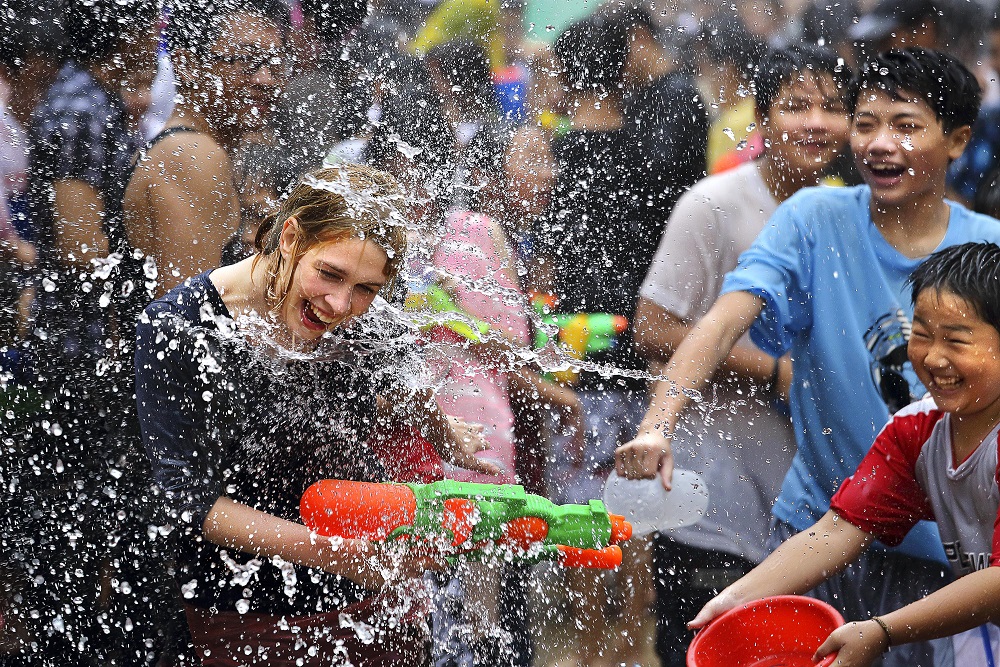
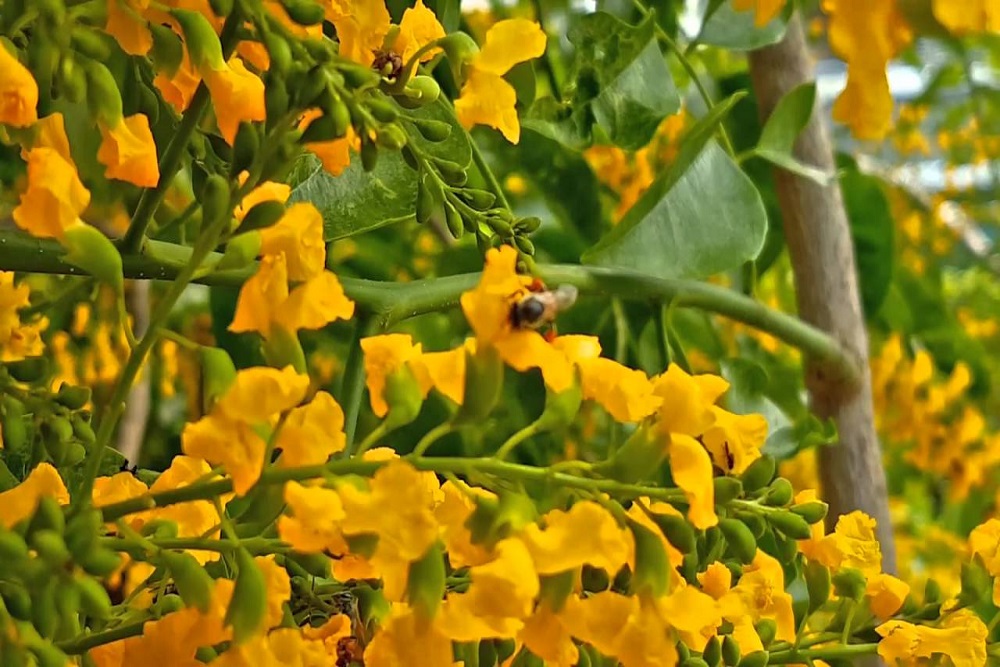

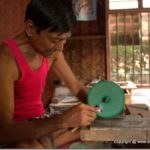

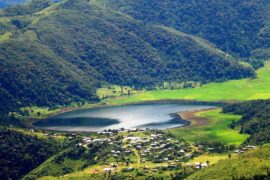
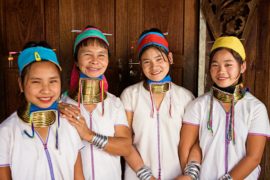
Comments are closed.